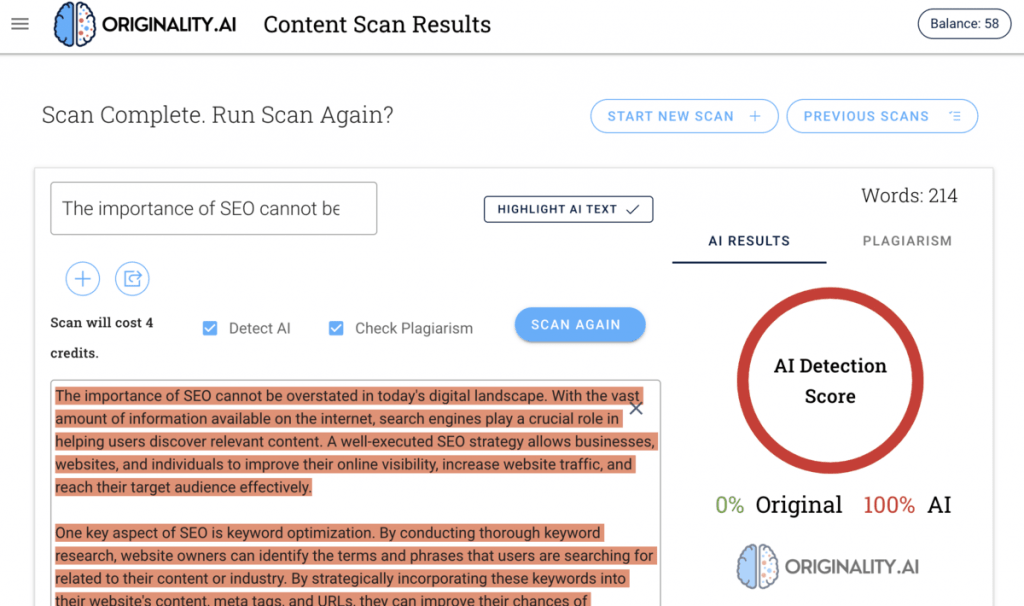Artificial intelligence (AI) is transforming the way we create and consume content online. With the increasing prevalence of AI-generated content, many content detectors have emerged to ensure the authenticity and originality of online content. However, there are also those who want to bypass these content detectors, and finding ways to do so has become an ongoing challenge.
Updates in AI Detection Software
In recent weeks, there have been significant updates to AI detection software, likely in response to the viral video that demonstrated how to bypass these detectors. Google, for one, has announced that they will not be punishing AI-generated content. However, it remains to be seen if this is true. Meanwhile, upgrades to AI detection software have been introduced to detect plagiarism and AI-generated content.
One tool that has recently been updated is originality.ai. This software highlights the text that it believes to be AI-generated. Also, it gives it a confidence rating using a heat map. This is useful for those who use handwritten and AI-generated content. It allows them to identify which text sections are likely to be detected by content detectors.
Testing and Implications for Content Authenticity
To test this new tool, we ran a 250-word article related to the SEO industry through one of the AI detection tools. The initial result was that the article was 100% generated by artificial intelligence.

Next, we checked an article that was written by a human. The tool showed us that this article was 100% humanly written. Although part of the article was highlighted in pale red.

While this tool is still in its early stages, it provides valuable insights into how content detectors work. Tool can help those who want to bypass them to make their content appear more authentic. Changing sentence lengths, adding synonyms, and making human mistakes can make a big difference in the originality score, as AI-generated content tends to follow a formulaic pattern.
As AI-generated content becomes more prevalent, content detection software will need to keep upgrading to detect mixed content more effectively. While the originality.ai tool is just one of many available. It is a step in the right direction towards creating more accurate content detection software.
Conclusion
In conclusion, the updates to AI detection software and the introduction of new tools, such as originality.ai, are changing the game for content creators and content detectors alike. Despite the presence of methods to bypass content detectors, the introduction of these new tools has simplified the detection of AI-generated content. Consequently, these tools play a crucial role in ensuring the authenticity and originality of online content.